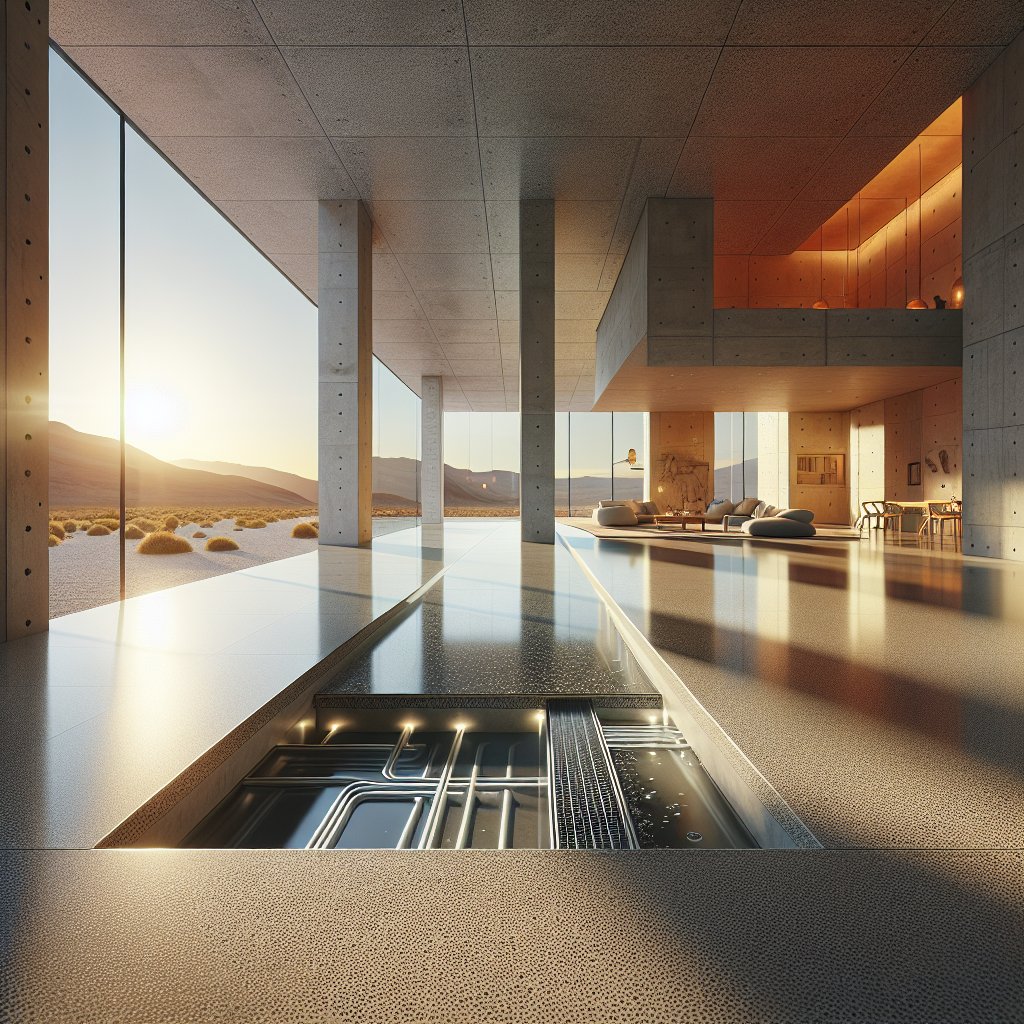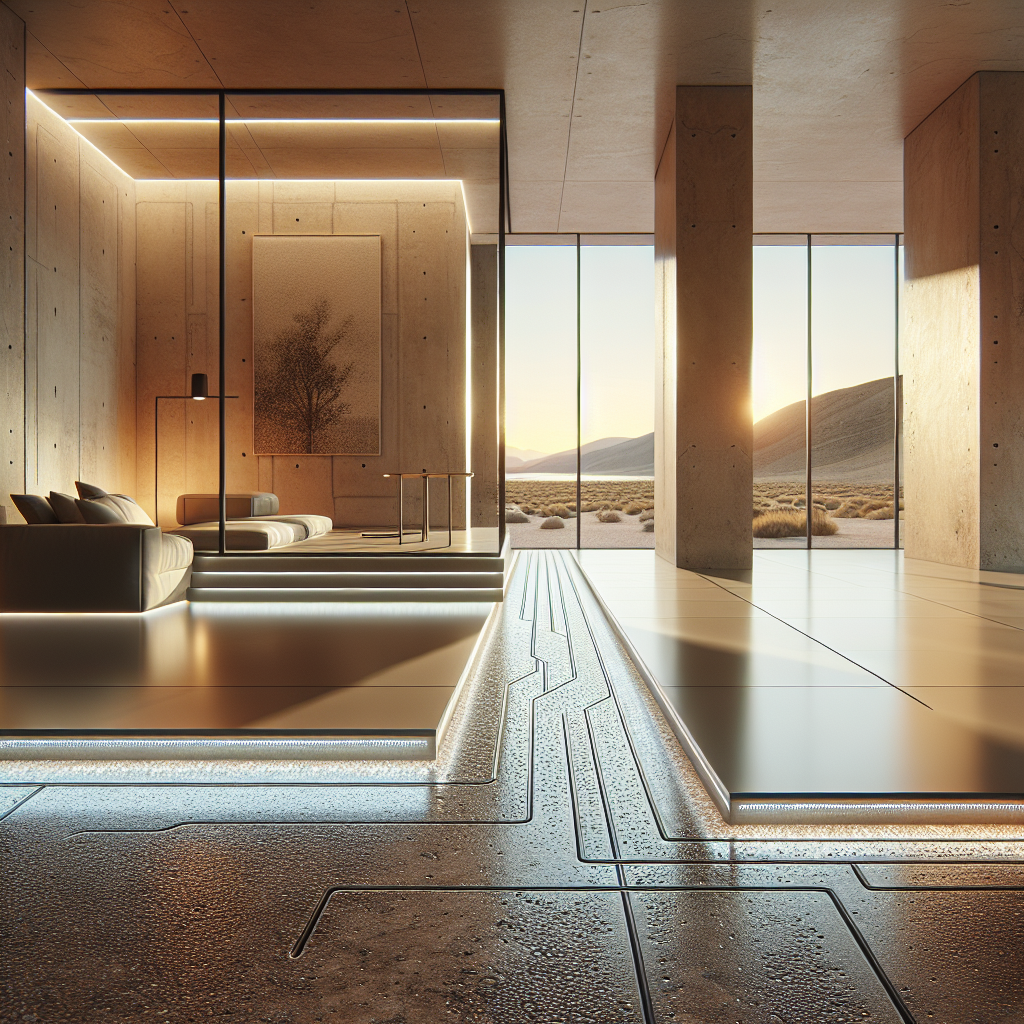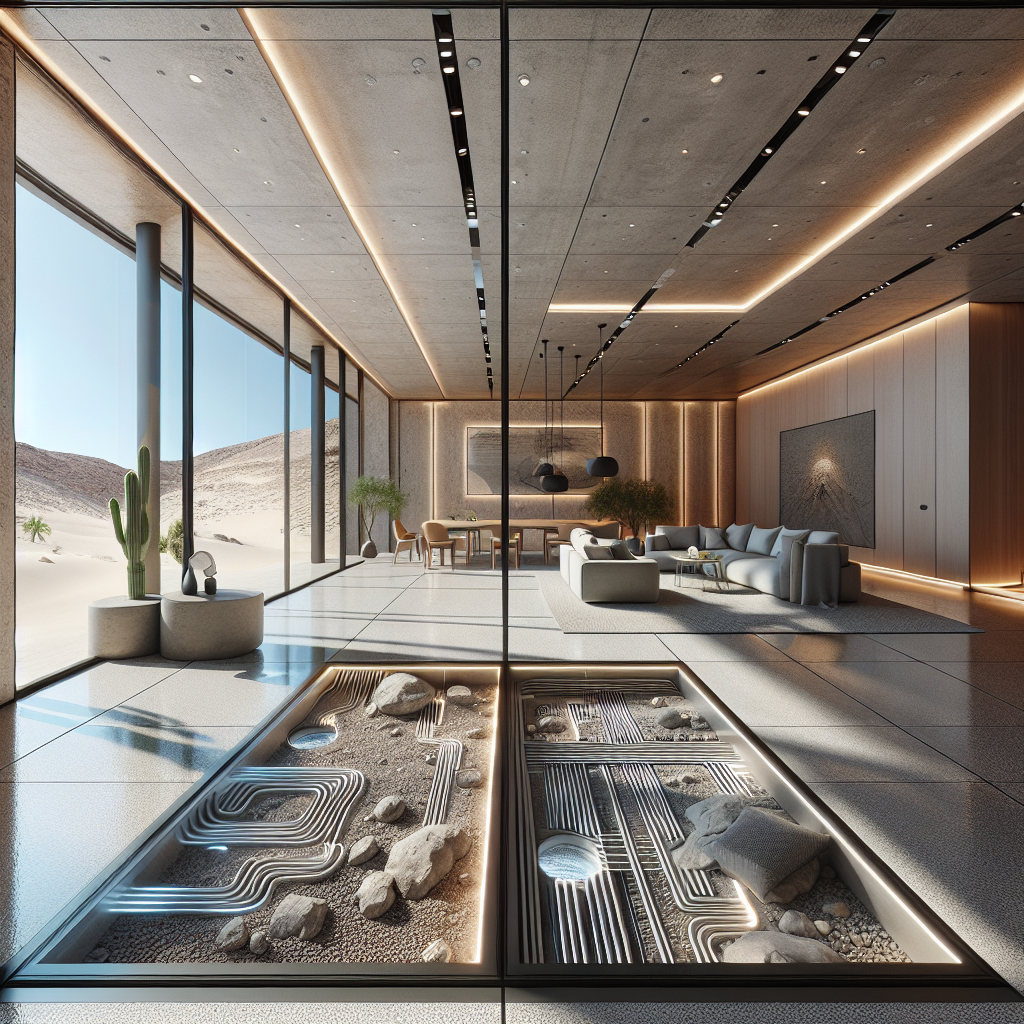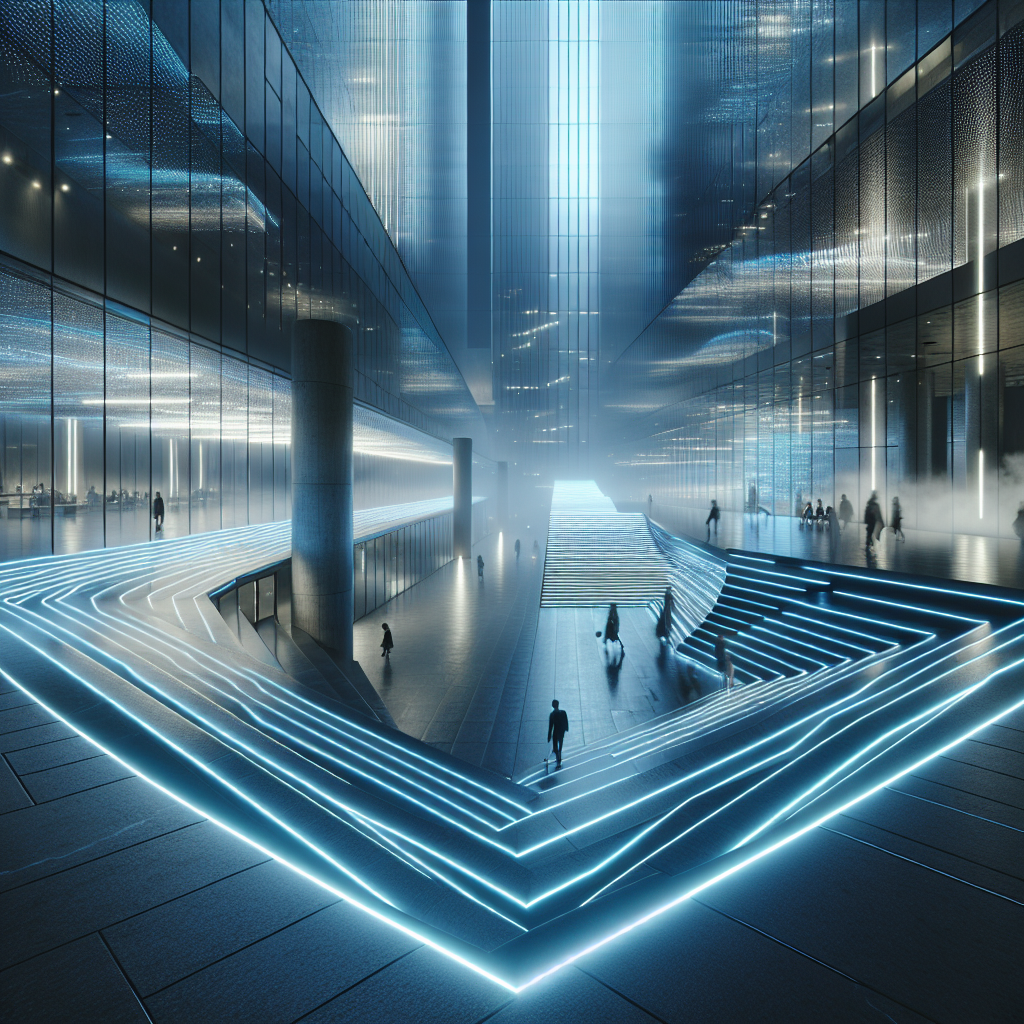Radiant cooling floors: harnessing subterranean temperatures

Radiant Cooling Floors: Harnessing Subterranean Temperatures for Sustainable Luxury
In the realm of high-end architecture and interior design, the quest for sustainable solutions that marry aesthetics with environmental responsibility has never been more critical. Among the latest innovations reshaping luxury interiors is the rise of radiant cooling floors, a sophisticated technology that harnesses subterranean temperatures to provide elegant, efficient, and eco-friendly climate control. As architects and designers increasingly embrace sustainable methodologies, radiant cooling floors emerge as a frontrunner, seamlessly integrating with contemporary design trends and elevating the sensory experience of indoor spaces.
The Science Behind Radiant Cooling Floors
Radiant cooling floors operate on a simple yet ingenious principle: leveraging the earth’s stable subterranean temperatures to regulate indoor climates. Unlike traditional air conditioning systems, which rely on forced air circulation, radiant cooling employs a network of embedded pipes beneath the flooring surface. These pipes circulate cool water, absorbing excess heat from the room and gently lowering ambient temperatures through radiation and convection.
This innovative approach draws inspiration from ancient architectural practices, where civilizations intuitively utilized the earth’s thermal mass to moderate indoor environments. For instance, traditional desert architecture, such as the ancient Persian windcatchers, capitalized on passive cooling techniques to maintain comfortable indoor temperatures without modern energy consumption. Ancient desert architecture continues to inform contemporary sustainable practices, demonstrating the timeless value of harnessing natural resources.
Integrating Radiant Cooling into Contemporary Design
Architects and interior designers are increasingly recognizing radiant cooling floors as an opportunity to enhance spatial aesthetics while promoting sustainability. Unlike bulky HVAC units and intrusive ductwork, radiant cooling systems remain entirely hidden beneath sleek, minimalist surfaces, allowing for unobstructed architectural expression and interior creativity.
In luxury residential projects, designers frequently pair radiant cooling floors with high-end finishes such as polished concrete, terrazzo, or natural stone. These materials not only amplify the cooling effect through excellent thermal conductivity but also deliver visual elegance and tactile pleasure. Imagine stepping barefoot onto a polished terrazzo floor, its smooth, cool surface providing immediate sensory relief from summer heat—a subtle yet profound luxury that elevates daily living.
Commercial spaces, too, benefit significantly from radiant cooling technology. Offices, galleries, and retail environments designed with radiant cooling floors experience improved indoor air quality, reduced noise pollution, and enhanced occupant comfort. By eliminating the constant hum and draftiness of traditional air conditioning, these spaces become tranquil havens conducive to productivity and creativity.
Case Study: The Sustainable Elegance of The Line Project
One of the most compelling contemporary examples of radiant cooling floors integrated into ambitious architectural design is Saudi Arabia’s futuristic city, The Line. This visionary urban development exemplifies how subterranean cooling technologies can redefine luxury living in extreme climates. With temperatures soaring in the Arabian desert, The Line’s architects turned to radiant cooling floors to achieve a comfortable, sustainable indoor environment without compromising aesthetics or energy efficiency.
Beyond mere functionality, the project’s commitment to subterranean cooling aligns with its broader sustainability goals, underscoring a holistic approach to environmental responsibility. The innovative use of radiant cooling in The Line project has sparked global interest, prompting architects worldwide to reconsider conventional climate control strategies. The Line Project thus serves as a benchmark, illustrating how cutting-edge technology can harmonize with visionary design.
Environmental and Economic Advantages
Radiant cooling floors offer substantial environmental benefits, aligning perfectly with the industry’s ongoing shift toward sustainable and resilient building practices. According to recent studies, radiant cooling systems can reduce energy consumption by up to 30% compared to conventional air conditioning methods. This significant energy efficiency translates directly into reduced carbon emissions, making radiant cooling an essential component in the path toward net-zero architecture.
Moreover, the absence of mechanical air circulation minimizes dust and allergen dispersion, enhancing indoor air quality and occupant health. This aspect resonates strongly with the principles of biophilic design, which emphasizes the connection between human well-being and natural elements within built environments.
Economically, radiant cooling floors represent a sound long-term investment. While initial installation costs may exceed traditional HVAC systems, the substantial energy savings and reduced maintenance requirements over time result in a favorable return on investment. Additionally, the hidden nature of radiant cooling systems allows for greater flexibility in interior design, maximizing usable space and enhancing property value.
Challenges and Considerations
Despite their numerous advantages, radiant cooling floors require careful consideration during the design and installation phases. Proper insulation and moisture control are crucial to prevent condensation issues, which could otherwise compromise flooring materials and indoor air quality. Designers must also account for the system’s responsiveness, as radiant cooling floors typically exhibit slower temperature adjustments compared to forced-air systems.
To mitigate these challenges, architects and engineers increasingly employ advanced building management systems (BMS) and smart home technologies. These systems provide precise control over temperature settings, humidity levels, and energy consumption, ensuring optimal performance and occupant comfort. Integrating radiant cooling floors with smart home technology thus becomes essential for maximizing their benefits and ensuring seamless operation.
The Future of Radiant Cooling Floors in Luxury Design
As sustainability continues to shape the future of architecture and interior design, radiant cooling floors stand poised to become a standard feature in luxury developments worldwide. The growing demand for eco-conscious living spaces, coupled with advancements in building technologies, positions radiant cooling as a cornerstone of sustainable luxury.
Innovative projects such as wooden skyscrapers and vertical gardens are already embracing radiant cooling to complement their sustainability objectives. For instance, wooden skyscrapers benefit from radiant cooling floors by enhancing thermal comfort without detracting from their natural aesthetic appeal. Similarly, green roofs and vertical gardens pair seamlessly with radiant cooling, creating holistic environments that harmonize architecture, nature, and technology.
Ultimately, radiant cooling floors exemplify how innovative design solutions can address pressing environmental challenges while enriching the human experience. By harnessing subterranean temperatures, architects and designers can create spaces that are not only visually stunning but also inherently sustainable, comfortable, and timelessly luxurious.
As we continue to explore and embrace these subterranean innovations, radiant cooling floors promise to redefine our relationship with built environments, ushering in a new era of sustainable elegance.








